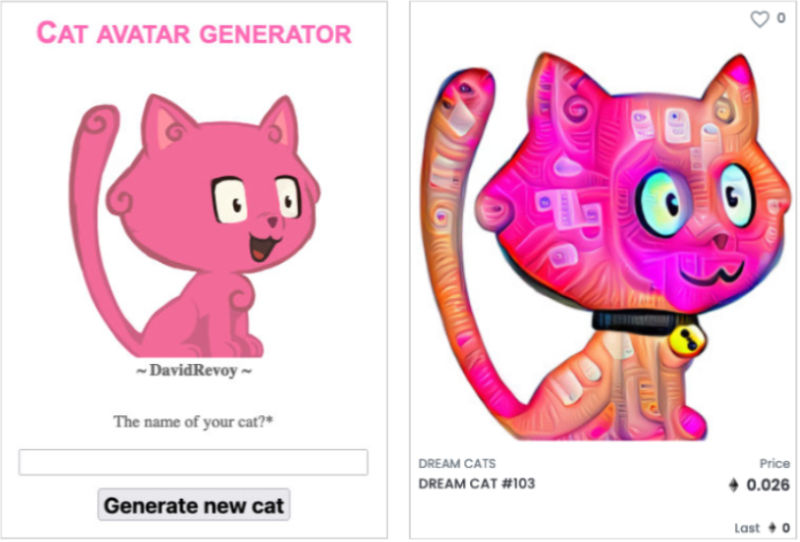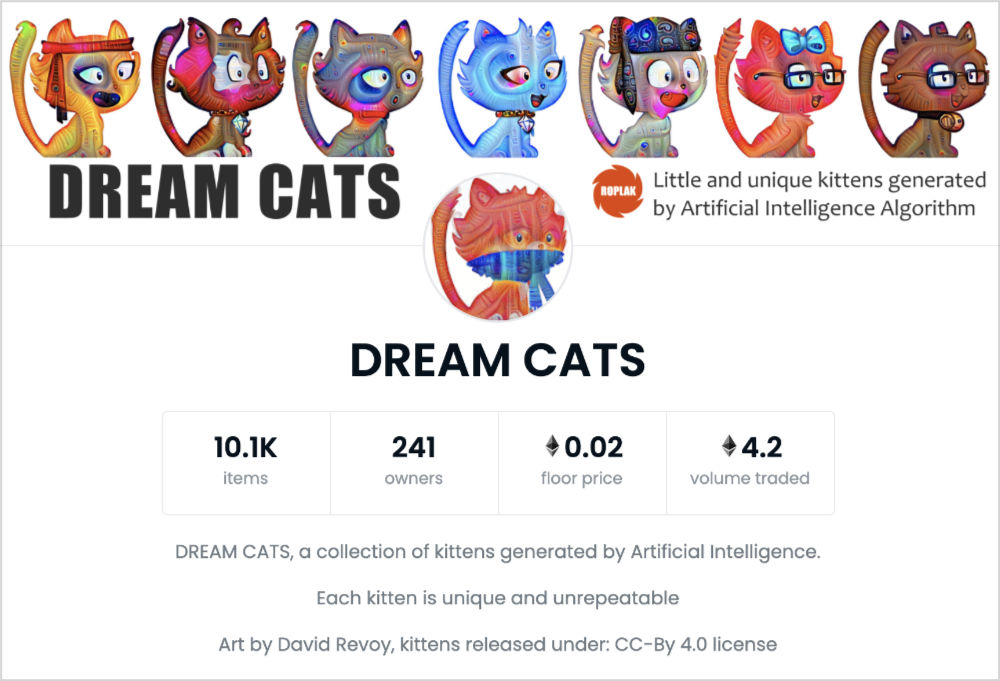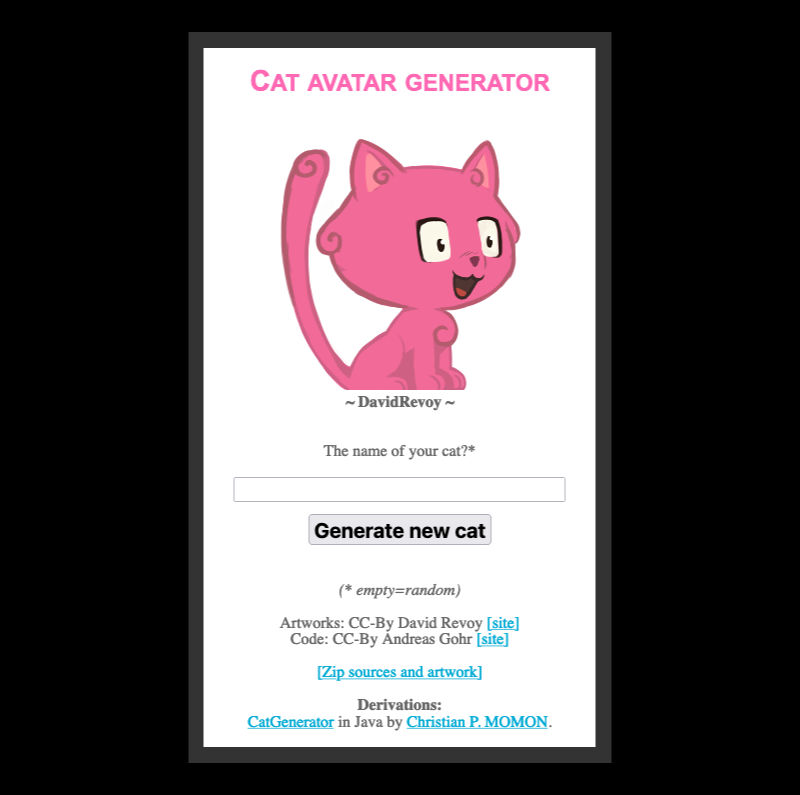Blog / 2021 / Uncopyright and NFTs: David Revoy’s Dream Cat-pocalypse
September 24, 2021

What happened:
The NFT maker ROPLAK published some of the artist David Revoy’s work on OpenSea, an NFT sales platform. The images in question are from Revoy’s CatAvatar generator, and ROPLAK has simply applied the DeepDream filter to the CatAvatars so that the company can claim to have “generated” what it’s calling DREAM CATS. The NFT maker put Revoy’s name on its DREAM CATS collection—crediting him, while also making it seem like he’s involved somehow—and ROPLAK has made at least 10,000 euros in sales so far. Meanwhile, the artist has not received any portion of this profit.
Where it gets interesting:
Revoy doesn’t want any of the money and he’s fine with ROPLAK keeping the thousands of euros it’s already accrued. Instead, his aim is for his CatAvatar collection to be removed from the NFT universe, because NFTs are antithetical to his values. He says it’s like if his work was used for racist propaganda or in some other way to hurt people, and he’s claiming his moral right to forbid this particular use of his art.

Because that’s the thing: Revoy releases much of his work under free licenses through Creative Commons. In fact, ROPLAK’s rip-off of Revoy’s CatAvatar is legal in the sense that the artist permits commercial use of it as well as derivative artworks with attribution. Still, the NFT maker isn’t completely in the clear.
Artists can legally claim a moral right to their work. (In American law, the word “moral” does not appear, but some protections exist under Title 17, chapter 1, section 106A of the US Code.) Creatives can put a stop to a use of their art if they can convince the judicial system that it harms their honor or their reputation.
And Revoy does just that—not in court, but in this article. The gist of his argument is that, as someone who vocally and frequently questions copyright, he objects to the way that NFTs pretend to turn digital files, which can be replicated basically for free, into so-called “unique” things—AKA property—that can be bought and sold. This tech bro sleight of hand is, in Revoy’s words, a “capitalist dream,” and the artist doesn’t mean that as a compliment. Add to that the environmental devastation caused by NFT production and trading* and it’s no wonder Revoy wants the DREAM CATS collection taken down.

It’s an in-between space we uncopyrighting artists exist in. We’ve rejected the world-as-it-is in favor of living in the world-as-we-know-it-can-be in order to inspire others to join us here, and the world-as-it-is does not make it easy for us. Still, as Revoy’s case makes clear, it is possible to free your art without leaving yourself powerless in the face of the giant suck that is the NFT universe.
*I wrote a pro-NFT article back before the environmental impact became widely known and before it got to be trendy for fine artists to try to make money using this questionable market. In case it’s not already obvious, I want to specificy that I will never use NFTs to make money off of my art for the same reason that I haven’t eaten meat in over a decade: it pollutes and it does so without adding value to the world or to my life. Plus, unlike the fine artists who are animating their art to get into the NFT universe, I’ve been making fine art GIFs for a while now, and I much prefer them to be freely available!
Maybe this post made you think of something you want to tell me? Or perhaps you have a question about my art? I’d love to hear from you!
To receive an email every time I publish a new article or video, sign up for my special mailing list.
If you enjoyed this post, Ko-fi allows you to donate. Every dollar you give is worth a bajillion to me!


